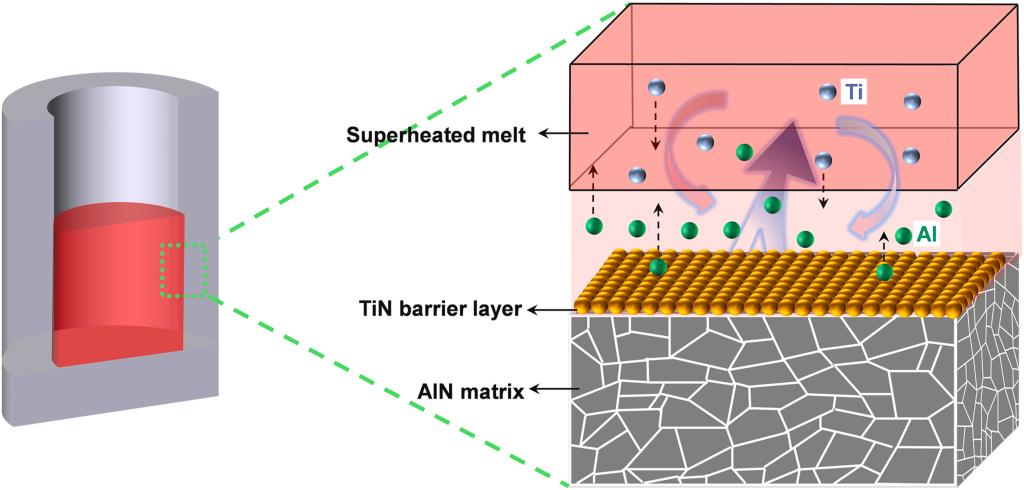Experimental study on the corrosion of AlN refractories used as crucibles for induction melting of TiNi alloys
Ruyuan Wang, Xuan Luo, Chao Zhao*, Minghan Sun, Ning Li*
https://www.sciencedirect.com/science/article/pii/S2238785424010020
Abstract
Vacuum induction melting has proven to be a cost-efficient way to fabricate TiNi alloys with excellent compositional homogeneity and uniformity. However, the high reactivities of TiNi alloys generate aggressive melt attacks with a particular ceramic crucible. Here, the performance of AlN crucible for melting TiNi alloys was investigated, and the underlying mechanisms for the interfacial interactions were revealed. The results demonstrated the feasibility of using AlN crucibles for induction melting of TiNi alloys. Specifically, melt infiltration was suppressed and thus physical erosion was diminished by reducing the apparent porosity of the crucible. Further investigations combined with a theoretical analysis revealed that the TiN barrier layer distributed on the crucible surface was formed in situ due to crucible/melt interactions, which protected the ceramic matrix from further melt attack and limited the contaminant levels. Our work provides a viable pathway for the preparation of high-quality TiNi alloys via induction melting.


